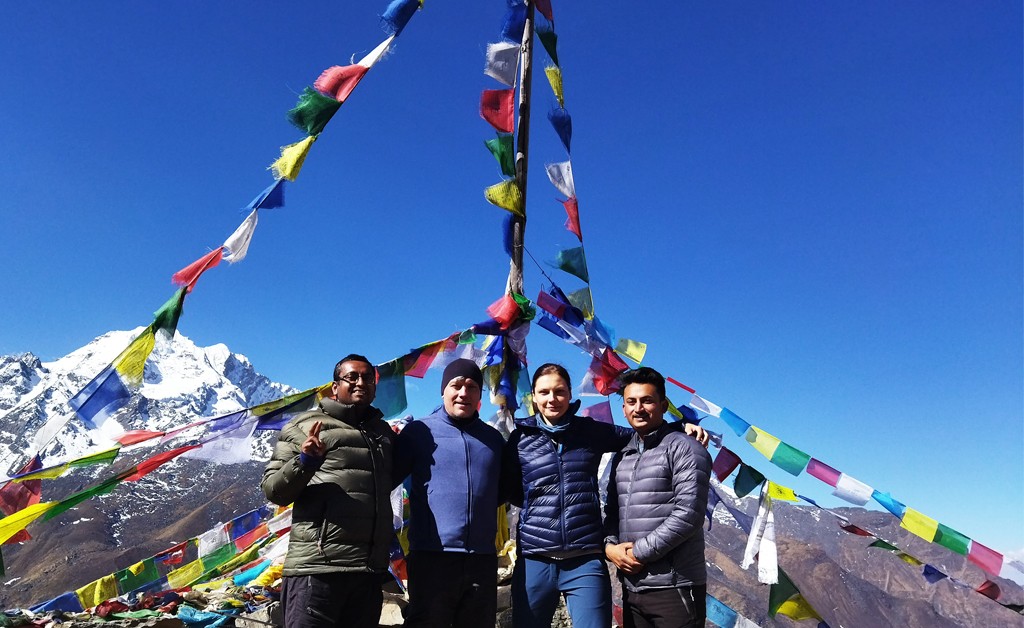Trek to holy Gosaikunda Lake, visiting Langtang village and the Kyanjin Gompa en route. Explore the rhododendron forests, wide meadows, and stunning waterfalls on the trail. Rejuvenate your soul and unwind following the alpine woodlands in the Langtang region.
Get to know the Langtang Himalayas and indigenous group of Tamangs on the Langtang Gosaikunda trek. Enjoy adventurous trekking, striking mountain views, and come across diverse flora & fauna. It is a perfect trek package for anyone looking to spend a long time in the mountains. Langtang and Gosaikunda trek's difficulty level is moderate, so it's a great option for beginner trekkers with a good physique.
With that being said, this trek is a bit on the rougher side than the Langtang Valley trek. Langtang region is one of the most beautiful areas in Nepal, located north of Kathmandu. The entire Langtang Gosaikunda trail is part of the Langtang National Park. Therefore, you can hope for some wild encounters along the way. The trail is very impressive and pretty.
Compared to famous trails like Everest base camp and Annapurna base camp, Langtang Valley with Gosaikunda Lake trek is less visited regardless of the equally rewarding venture. Exploring the picturesque villages of the Tamangs, you ascend to Kyanjin Ri (4773m.|15655ft.) and hike to Tserko Ri (4984m.|16347ft.). The trail goes through rhododendron and pine forests. And sometimes it moves along the Langtang river and crosses many suspension bridges.
Langtang valley and Gosaikunda trek is a guesthouse trek. This accommodation allows travelers to experience the authentic village lifestyle. Resided mostly by Tamangs and Sherpas, the trek is quite enriching in terms of cultural experience. The locals are followers of Tibetan Buddhism. The trail has many stupas, chortens, and prayer wheels.
Mountain views during the trek
The Langtang Gosaikunda trek 15 days is a perfect venture to quench your thirst for breathtaking landscapes. This trekking route is a haven for travelers who are in love with Himalayan sceneries and mountain views. The trek offers majestic views of snow-capped giants like Ganesh Himal (7422m.|24350ft.), Langtang Lirung (7227m.|23710ft.), Dorje Lhakpa (6966m.|22854ft.), Shishapangma (8027m.|26335ft.), Loenpo Gang (6979m.|22896ft.), Gangchenpo (6378m.|20925ft.), Yala Peak (5500m.|18044ft.), etc.
Trek Gosaikunda Lake
Situated at 4380m.|14366ft., Gosaikunda Lake is a high-altitude alpine lake with significant religious values. It's also a pilgrimage site and is visited by hundreds of pilgrims every year. Gosaikunda is believed to be the abode of Lord Shiva and his wife, as per one of the Hindus mythology books. You'll hear many stories from locals about the lake and past events. We trek to Gosaikunda Lake to enjoy its beauty and serenity.
Why go on Langtang Gosaikunda trekking with Nepal Nirvana Trails?
We have a very simple philosophy to help people traveling in Nepal enjoy Himalayan trails without any hassle. Nepal Nirvana Trails is established by a guy who has more than two decades of expertise in organizing treks and tours in the Himalayas. So, it's given that we have the highest customer satisfaction and success rate.
Our Langtang Gosaikunda trek package is a jewel we treasure, and love to see people from around the world traversing it. It's a trek to fulfill your heart with the gorgeous landscapes and warm hospitality of locals. We work with native guides and porters, who enhance the journey with their knowledge about the region.
Apart from that, our Langtang Gosaikunda trek cost is the best in the market. No hidden costs or policy with us. We assure you of a safe trek in the Himalayas. Book Langtang Gosaikunda trek 2026|2027 through our site. You can add additional tours and side trips as addons on the package during checkout.
These are a few other famous treks in the Himalayas; Mardi Himal Trek, Gokyo Lake Trek, Upper Mustang Trek, Annapurna Circuit Trek, Manaslu Circuit Trek, etc.








